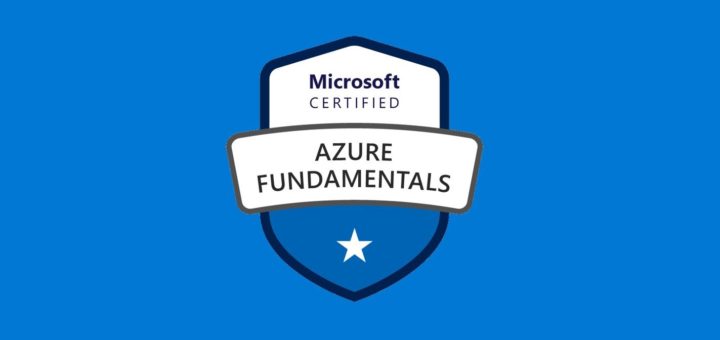Question #41
The Lambda function below is being called through an API using Amazon API Gateway. The average execution time for the Lambda function is about 1 second.
The pseudocode for the Lambda function is as shown in the exhibit.
What two actions can be taken to improve the performance of this Lambda function without increasing the cost of the solution? (Select two.)
- A. Package only the modules the Lambda function requires
- B. Use Amazon DynamoDB instead of Amazon RDS
- C. Move the initialization of the variable Amazon RDS connection outside of the handler function
- D. Implement custom database connection pooling with the Lambda function
- E. Implement local caching of Amazon RDS data so Lambda can re-use the cache
Correct Answer: AC
Question #42
An application will ingest data at a very high throughput from many sources and must store the data in an Amazon S3 bucket. Which service would BEST accomplish this task?
- A. Amazon Kinesis Firehose
- B. Amazon S3 Acceleration Transfer
- C. Amazon SQS
- D. Amazon SNS
Correct Answer: A
Question #43
A Developer has setup an Amazon Kinesis Stream with 4 shards to ingest a maximum of 2500 records per second. A Lambda function has been configured to process these records.
In which order will these records be processed?
- A. Lambda will receive each record in the reverse order it was placed into the stream following a LIFO (last-in, first-out) method
- B. Lambda will receive each record in the exact order it was placed into the stream following a FIFO (first-in, first-out) method.
- C. Lambda will receive each record in the exact order it was placed into the shard following a FIFO (first-in, first-out) method. There is no guarantee of order across shards.
- D. The Developer can select FIFO, (first-in, first-out), LIFO (last-in, last-out), random, or request specific record using the getRecords API.
Correct Answer: C
https://aws.amazon.com/lambda/faqs/
Question #44
A static website is hosted in an Amazon S3 bucket. Several HTML pages on the site use JavaScript to download images from another Amazon S3 bucket. These images are not displayed when users browse the site.
What is the possible cause for the issue?
- A. The referenced Amazon S3 bucket is in another region.
- B. The images must be stored in the same Amazon S3 bucket.
- C. Port 80 must be opened on the security group in which the Amazon S3 bucket is located.
- D. Cross Origin Resource Sharing must be enabled on the Amazon S3 bucket.
Correct Answer: D
https://docs.aws.amazon.com/AmazonS3/latest/dev/cors.html
Question #45
Amazon S3 has the following structure: S3://BUCKET/FOLDERNAME/FILENAME.zip
Which S3 best practice would optimize performance with thousands of PUT request each second to a single bucket?
- A. Prefix folder names with user id; for example, s3://BUCKET/2013-FOLDERNAME/FILENAME.zip
- B. Prefix file names with timestamps; for example, s3://BUCKET/FOLDERNAME/2013-26-05-15-00-00-FILENAME.zip
- C. Prefix file names with random hex hashes; for example, s3://BUCKET/FOLDERNAME/23a6-FILENAME.zip
- D. Prefix folder names with random hex hashes; for example, s3://BUCKET/23a6-FOLDERNAME/FILENAME.zip
Correct Answer: D
Question #46
For a deployment using AWS CodeDeploy, what is the run order of the hooks for in-place deployments?
- A. Before Install -> Application Stop -> Application Start -> After Install
- B. Application Stop -> Before Install -> After Install -> Application Start
- C. Before Install -> Application Stop -> Validate Service -> Application Start
- D. Application Stop -> Before Install -> Validate Service -> Application Start
Correct Answer: B
Reference:
https://docs.aws.amazon.com/codedeploy/latest/userguide/reference-appspec-file-structure-hooks.html
Question #47
A Developer is developing an application that manages financial transactions. To improve security, multi-factor authentication (MFA) will be required as part of the login protocol.
What services can the Developer use to meet these requirements?
- A. Amazon DynamoDB to store MFA session data, and Amazon SNS to send MFA codes
- B. Amazon Cognito with MFA
- C. AWS Directory Service
- D. AWS IAM with MFA enabled D
Correct Answer: B
Reference:
https://docs.aws.amazon.com/cognito/latest/developerguide/user-pool-settings-mfa.html
Question #48
A game stores user game data in an Amazon DynamoDB table. Individual users should not have access to other users’ game data. How can this be accomplished?
- A. Encrypt the game data with individual user keys.
- B. Restrict access to specific items based on certain primary key values.
- C. Stage data in SQS queues to inject metadata before accessing DynamoDB.
- D. Read records from DynamoDB and discard irrelevant data client-side.
Correct Answer: B
Reference:
https://docs.aws.amazon.com/amazondynamodb/latest/developerguide/specifying-conditions.html
Question #49
A company developed a set of APIs that are being served through the Amazon API Gateway. The API calls need to be authenticated based on OpenID identity providers such as Amazon or Facebook. The APIs should allow access based on a custom authorization model.
Which is the simplest and MOST secure design to use to build an authentication and authorization model for the APIs?
- A. Use Amazon Cognito user pools and a custom authorizer to authenticate and authorize users based on JSON Web Tokens.
- B. Build a OpenID token broker with Amazon and Facebook. Users will authenticate with these identify providers and pass the JSON Web Token to the API to authenticate each API call.
- C. Store user credentials in Amazon DynamoDB and have the application retrieve temporary credentials from AWS STS. Make API calls by passing user credentials to the APIs for authentication and authorization.
- D. Use Amazon RDS to store user credentials and pass them to the APIs for authentications and authorization.
Correct Answer: A
Question #50
A supplier is writing a new RESTful API for customers to query the status of orders. The customers requested the following API endpoint. http://www.supplierdomain.com/status/customerID
Which of the following application designs meet the requirements? (Select two.)
- A. Amazon SQS; Amazon SNS
- B. Elastic Load Balancing; Amazon EC2
- C. Amazon ElastiCache; Amazon Elacticsearch Service
- D. Amazon API Gateway; AWS Lambda
- E. Amazon S3; Amazon CloudFront
Correct Answer: BD




Thank you !!
Helped me in achieving my aws developer certification.